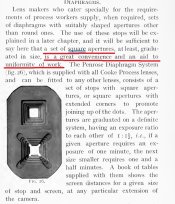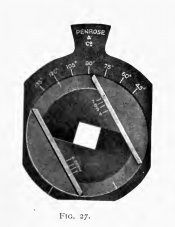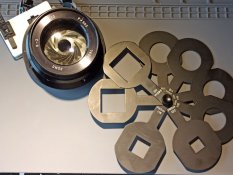There was one model of the Apo Nikkor 369/9 which had both an adjustable square aperture, plus a multi-bladed circular aperture, while also having a slot potentially accepting Waterhouse apertures.
The square apertures in process lenses, or even stranger shapes, may be used to correct fall-off of the lens in the corners to some extent. It would not work if we were to print a circular format, but it helps for squared/rectangular formats.
The square also promotes "Joining the Dots" in half tone process, this is the main purpose, which may be specially interesting for oriental characters (Hanzi, Kanji...)
A nice year 1923 reference:
http://www.survivorlibrary.com/libr..._practical_manual_of_photo-engraving_1923.pdf

The Penrose system allows to rotate the square to provide an squared blur in the desired direction, to match the rulling of the screen, without having to rotate the lens. This "iris" has two blades... In that way a squared blur can be generated. The effect is that a screen made of dots (geometrically arranged ) provides a nicer feel in the result.

This is my LOMO O-2 600, it has a very circular iris, and also a set of different square apertures and a set of equal circular apertures. Perhaps this is also intended to glue on them gelatin filters (or other kind) to cancel CA or to make separations, if not going to place filters on the circular apertures then the repeated circular apertures would not make sense, while also having an iris, a very circular one with a lot of blades.
 (Under the LOMO an ATMEL ICE is seen, this is for example to debug the Marlin firmware controlling 3D printers. The ICE survived
(Under the LOMO an ATMEL ICE is seen, this is for example to debug the Marlin firmware controlling 3D printers. The ICE survived  )
)











 )
)

